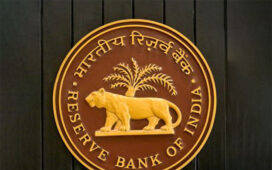Whenever he travels around the Southeast Asian region or to China, Malaysian private equity investor Ian Yoong Kah Yin always uses his e-wallet to settle all payments. Yoong, a former investment banker, seldom travels with a big chunk of cash, preferring to use an app he downloaded on his phone so he can use a QR code to pay in Malaysian ringgit or any local currency.
Yoong said using a QR code is not only convenient but also cuts transaction costs as he does not need to convert ringgit to US dollar first and then to another local currency, avoiding double currency conversion rates. The reduced role of the US dollar and the growing role of the Chinese yuan and local currencies used by members of the Association of Southeast Asian Nations is “inevitable”, according to Yoong, who noted there are about 100 banks in the Asean region that are part of the yuan-based Cross-border Interbank Payment System, or CIPS.
“Asean economies are accelerating the move away from the US dollar as geopolitical uncertainties, monetary shifts and increasing currency volatility prompt de-dollarization in the region,” Yoong said. He said Washington’s “erratic trade policy decisions” combined with the recent “sharp underperformance” of the US dollar are fueling a rapid shift to other currencies.
Yoong’s personal experience and insights on using more Chinese and Asean currencies in cross-border transactions reflect how Asean countries are gradually reducing their dependence on the US dollar to cut transaction costs, enhance efficiency and mitigate the impact of foreign exchange fluctuations.
Asean leaders have committed to promoting local currency settlements, as stated in the Asean Economic Community Strategic Plan 2026-2030 adopted at the 46th Asean Summit held on May 26 in the Malaysian capital. The regional bloc aims to deepen financial integration and inclusion through several measures such as liberalising capital accounts to facilitate seamless cross-border investments and financing, strengthening regional payment connectivity and promoting local currency settlements. Enhancing payment connectivity is also seen as aiding trade and investments in the region.
The strategic plan was formulated at a time when the US dollar, which has long dominated global trade and investment, was sinking to multiyear lows. On April 21, for example, the US Dollar Index fell to a three-year low following US President Donald Trump’s criticism of Federal Reserve Chair Jerome Powell.
On June 26, the dollar sank to a fresh three-year low on the back of a report that Trump was considering nominating the next Fed chair early or a few months before Powell’s formal departure in May 2026.
Fragility underscored
Dutch investment bank ING said the escalating tensions in the Middle East “underscored the recent fragility” of the US dollar. “A spike in geopolitical risk and oil prices should have sent an oversold and undervalued dollar soaring, but the support for the greenback was instead small in size and duration,” ING said in its research paper on June 26.
Nawazish Mirza, a professor of finance at the Excelia Business School in France, said by allowing direct payments in local currencies, Asean states have reduced their reliance on intermediary currencies such as the US dollar, and this has led to lower transaction costs, reduced exchange rate risks, and enabled faster settlement times.
Mirza said Asean’s move toward de-dollarization has been “unmistakable” over the last two years. He noted that in 2024, the share of intra-Asean trade settled in local currencies was above 25 percent, compared to less than 10 percent in 2019.
While the US dollar remains dominant overall, accounting for over 70 percent of global trade invoicing, Asean’s initiatives to promote local currencies and the renminbi are gaining traction, he said.
Mirza said policies such as currency swap lines, bilateral local currency settlement agreements, and digital payment innovations, are making non-dollar settlements more viable and attractive.
“The speed of this transition will depend on sustained market confidence, liquidity, and the stability of these alternative currencies,” he said. Ying Jian said Chinese enterprises are the “most active participants and promoters” of the international use of the renminbi, and their growing wpresence in Asean has spurred demand for renminbi settlement, trading and financing.
Published in Dawn, July 21st, 2025



